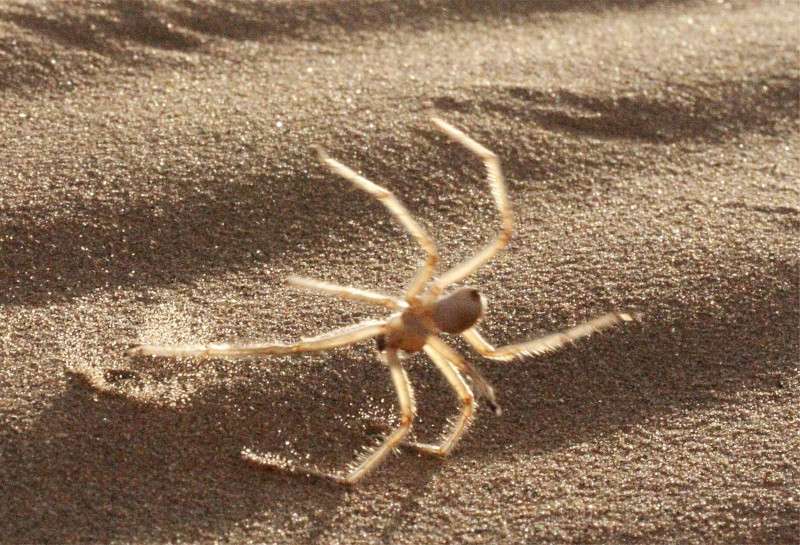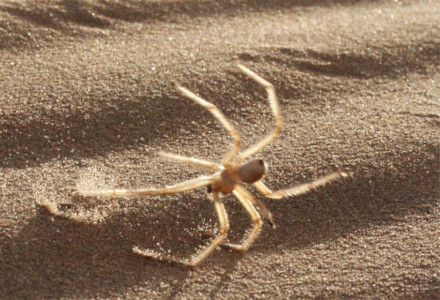
Photographer: Ingo Rechenberg
CC License: https://bit.ly/2UcIE9n
Somersaulting Spider Facts
- Firstly, Somersaulting Spider serves as the common name of the Cebrennus rechenbergi. This quite unique creature represents a recently discovered species of desert-dwelling spider.
- Furthermore, the first known sighting of this species by a researcher occurred in 2006. After that, however, scientists did not recognize the remarkable arachnid as a new species in 2014.
- Most notably, this spider derives its common name from its remarkable locomotive adaptation. That’s because, when threatened by a predator, the arachnid actually moves across the sand via somersaults.
- Finally, this method of escape allows it to achieve significant velocities. In fact, it more than doubles its speed in this manner, and thus enhances its chance of escaping threats.
Related Articles
Hobo Spider Trogloraptor Ladybird Spider
Somersaulting Spider Physical Description
The awesome Somersaulting Spider represents an astounding, yet physically only average-sized arachnid. In addition, unlike many spiders, this species displays no noticeable amount of sexual dimorphism.
Due to this fact, both genders of this highly adapted invertebrate average about 2 in (5 cm) in total leg span. Further, in coloring, both genders of the remarkable spider display identical patterns.
Finally, these consist of two rather distinct patterns, presented by nearly all individuals. These patterns consists of white with black markings on part of the body, and yellowish-tan on the rest of it.
- Kingdom: Animalia
- Phylum: Arthropoda
- Class: Arachnida
- Order: Araneae
- Family: Sparassidae
- Genus: Cebrennus
- Species: C. rechenbergi
Photographer: Ingo Rechenberg
CC License: https://bit.ly/2UcIE9n
Somersaulting Spider Distribution, Habitat, and Ecology
The extraordinary Somersaulting Spider only seems to exist in one highly localized area. Surprisingly, this area consists of the southeastern regions of Morocco, close to the border with Algeria, in Africa.
Due to its reclusive nature, it remains possible they that it also exists elsewhere in the region. The uniquely-adapted spider only seems to inhabit the extensive sand dunes located in the Erg Chebbi Desert.
The fascinating invertebrate also represents a medium-sized species of a huntsman spider. Though mildly venomous, the creature poses absolutely no known threat to humans under normal conditions.
Further, it evolved as a nocturnal species. In addition, it appears to feed primarily on moths, which it catches prior to sunrise.
Most notably, it employs its unique method of locomotion to escape threats such as predators. Thus, in this manner individuals are capable of moving as rapidly as an incredible 6.5 ft (2 m) per second.
However, this activity uses so much of its energy that if it is forced to use it too many times per day it does not survive.
Species Sharing Its Range
Medusas Head Bat Eared Fox Fennec Fox
Check out our other articles on 8 Swoon-Worthy Caves, Attenborough’s Pitcher Plant, Shark Bay, Deep Sea Hatchetfish, Seychelles Sheath-Tailed Bat, Brown Pelican

